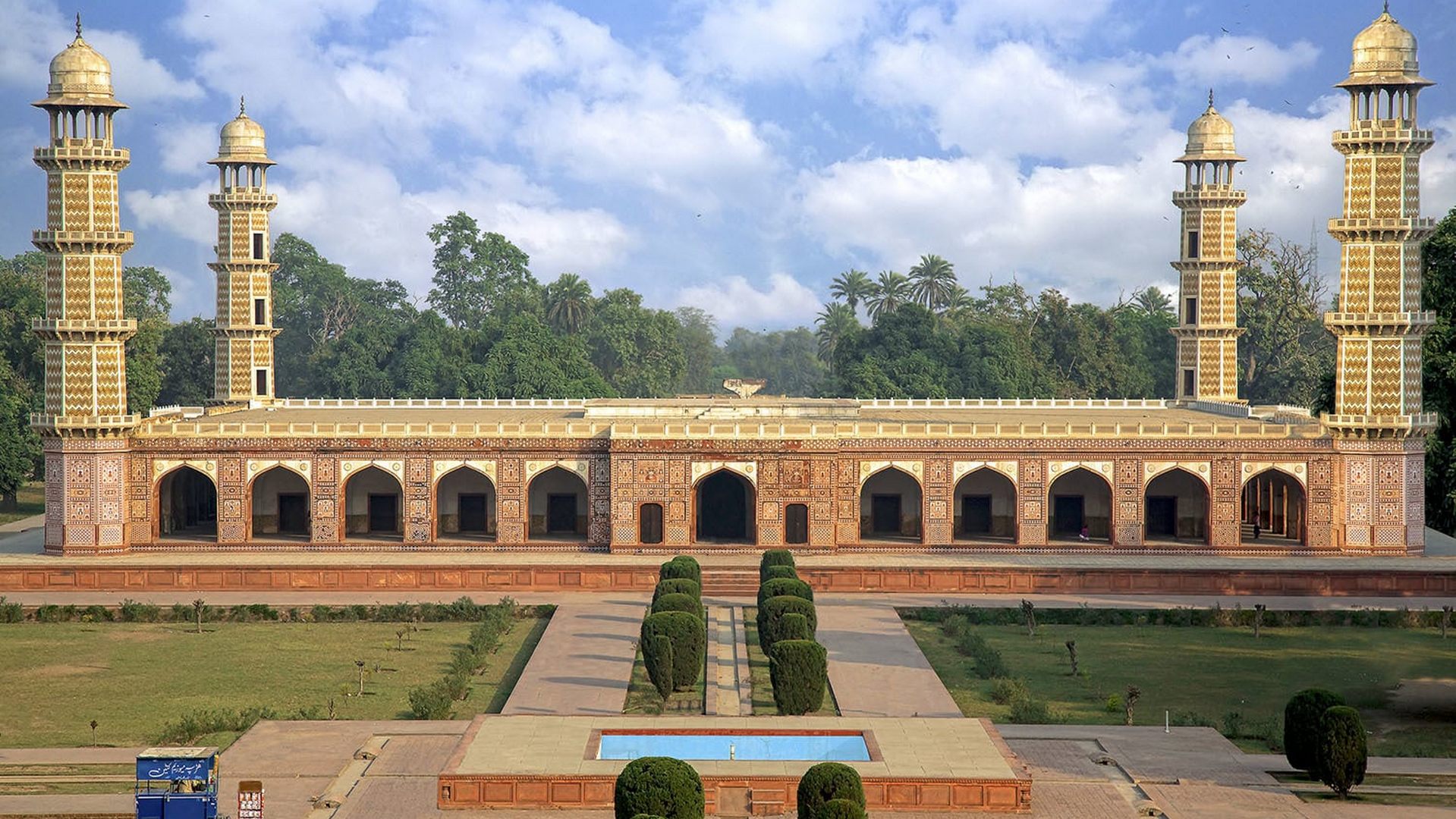Description
Property Name: Mausoleum of Emperor Jahangir
Inventory No: 92-42-3
Date of infill of the inventory form: 2008-02-14
Country (State party): Pakistan
Province: Lahore
Town:
Geographic coordinates: 31° 37′ 21″ N
74° 18′ 11″ E
Historic Period:
Year of Construction:
Style: Mughal
Original Use: Mausoleum
Current Use: Mausoleum
Architect: Unknown
Significance
Located just outside Lahore, at Shadera, this tomb is set in an ornamental garden; there are paved causeways, canals and reflecting pools, with four entrance gateways of red sandstone. The long, low, arcaded structure has four octagonal minarets engaged at the corners, their shafts patterned with chevrons and crowned by domed kiosks. The central octagonal chamber is separated from the outer surrounding arcades by walls 19m thick. Over this central chamber, on the roof, is a square platform that once supported a marble pavilion, now destroyed. Decorative themes are worked in fresco, marble inlay and mosaic tiles, forming geometric patterns and panel designs of flower vases, whose origins are distinctly Iranian. The marble cenotaph is one of the finest in India with inlaid semiprecious stones set in naturalistic floral designs and calligraphy inscribing the Ninety-Nine Names of God.
Selection Criteria
–
State of Preservation
Son of Jehangir (Mughal Emperor who ruled from 1605 to 1627), Shah Jahan built the mausoleum 10 years after his father’s death, in 1637.The tomb suffered a great deal of destruction,The tomb was also used as the residence of a Sikh army officer of Spanish origin, caused great damage to the mausoleum. However the British government repaired it in 1889-90.
The site sustained water damage during flooding in 1988 that covered much of the site in 10 feet of water for 5 days. Currently on the tentative list for UNESCO World Heritage status.
References
Amin, Mohamed. Journey through Pakistan. Nairohi. Cameropix Publishers International, 1982.
Khan, Ahmad Nabi. Monuments of Islamic civilization in Islamic Republic of Pakistan. Rabat: ISESCO, 2000.
Mumtaz, Kamil Khan. Architecture in Pakistan. London: Concept Media Ltd.; North America: Butterworth Architecture.


